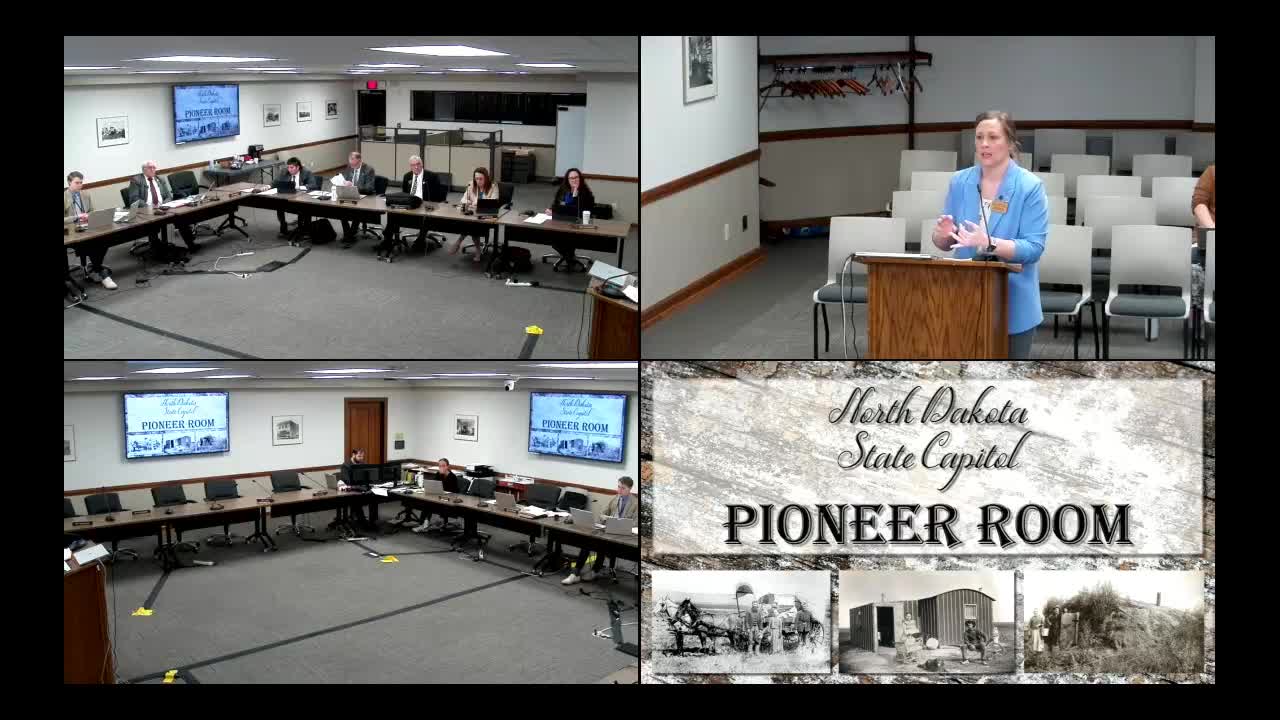Emergency Services discuss communication reliability amid technology upgrades
April 17, 2025 | House of Representatives, Legislative, North Dakota
This article was created by AI summarizing key points discussed. AI makes mistakes, so for full details and context, please refer to the video of the full meeting. Please report any errors so we can fix them. Report an error »

In a recent meeting of the North Dakota Legislature's Conference Committee, discussions centered around the communication protocols for emergency services, particularly in light of the transition to 800 megahertz systems. The committee emphasized the importance of establishing a reliable primary mode of communication for Public Safety Answering Points (PSAPs), while also allowing for secondary communication methods, such as cell phones.
The committee clarified that while cell phones are not the primary communication tool, they can still serve as a backup. This flexibility aims to ensure that emergency services can effectively coordinate across various agencies, as highlighted by the need for regulations to align with the protocols set by the Department of Emergency Services (DES).
A significant concern raised during the meeting was the financial burden associated with the transition to new communication systems. Emergency services may face substantial costs, with estimates of $6,700 per pager for staff members. This has sparked discussions about the reliability of different communication methods, particularly in areas with challenging topography where cell service can be unreliable.
One committee member pointed out that while cell phones have become a common tool, they lack the feedback mechanism that pagers provide. Pagers can confirm receipt of messages, which is crucial in emergency situations where knowing that a call has been received can make a difference in response times. This reliability factor was underscored by examples from local emergency managers who have experienced issues with signal strength in their offices.
As the committee continues to navigate these challenges, the focus remains on ensuring that when residents call 911, they can trust that their calls are being received and acted upon promptly. The discussions reflect a broader commitment to enhancing public safety and emergency response capabilities in North Dakota, while also addressing the financial implications for local agencies.
The committee clarified that while cell phones are not the primary communication tool, they can still serve as a backup. This flexibility aims to ensure that emergency services can effectively coordinate across various agencies, as highlighted by the need for regulations to align with the protocols set by the Department of Emergency Services (DES).
A significant concern raised during the meeting was the financial burden associated with the transition to new communication systems. Emergency services may face substantial costs, with estimates of $6,700 per pager for staff members. This has sparked discussions about the reliability of different communication methods, particularly in areas with challenging topography where cell service can be unreliable.
One committee member pointed out that while cell phones have become a common tool, they lack the feedback mechanism that pagers provide. Pagers can confirm receipt of messages, which is crucial in emergency situations where knowing that a call has been received can make a difference in response times. This reliability factor was underscored by examples from local emergency managers who have experienced issues with signal strength in their offices.
As the committee continues to navigate these challenges, the focus remains on ensuring that when residents call 911, they can trust that their calls are being received and acted upon promptly. The discussions reflect a broader commitment to enhancing public safety and emergency response capabilities in North Dakota, while also addressing the financial implications for local agencies.
View full meeting
This article is based on a recent meeting—watch the full video and explore the complete transcript for deeper insights into the discussion.
View full meeting
